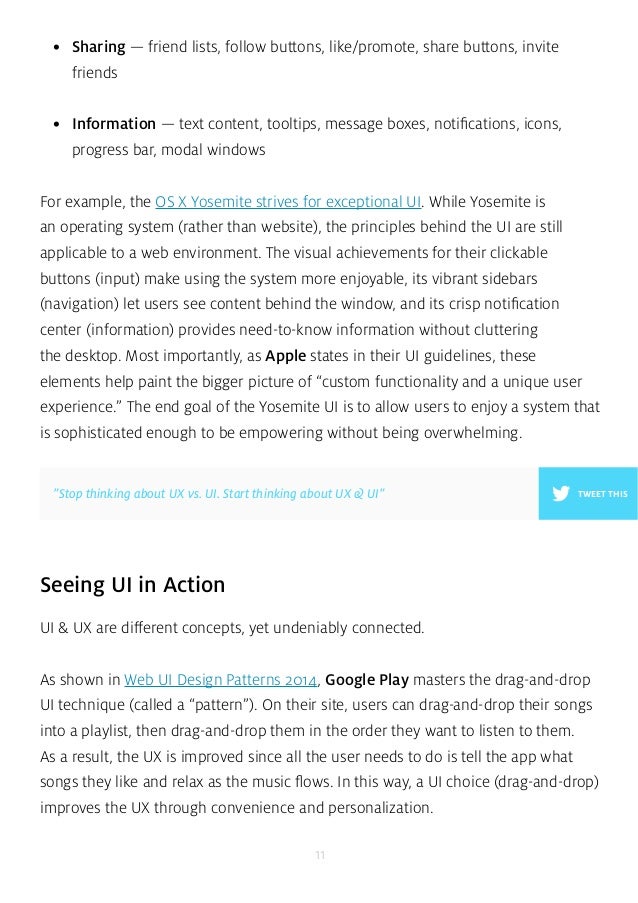Ux Choice On Twitter: Principle For Mac
( This is a sponsored article.) As designers working in an ever-changing field, it’s important that we develop an understanding of the timeless design principles that underpin everything we do. In the second article in my series for, I’ll explore the foundations that enable us to establish some universal principles of UX. These principles, which should sit at the heart of everything we design and build, are critical and will stand the test of time:. Visual Grammar.
Language and Typography. Narrative Design Collectively, these principles form the firm foundations on which we design great experiences. We can, of course, layer an understanding of other principles: psychology, anthropology, and economics. On top of these, enhancing what we build, but these core principles underpin the experiences we create. We’re increasingly asked to solve design problems that – as new technologies are imagined and invented – have never been solved before.

The good news is that the principles of the past still work. By focusing on acquiring these first principles, you develop skills that stand the test of time and set you apart as a designer.
. As UX professionals, we play a key role in raising the bar for customer experiences. A simple attention to detail is often what signals to the customer that we’re thinking about them. In the digital space, we focus on user interactions within applications devices and processes. With the ever-increasing computing power of desktops, browser sophistication and use of native apps, every day we learn of new ways to push the limits of what defines a well-crafted UI.
Ux Choice On Twitter: Principle For Machines
When used correctly, motion can be a key utility in helping your users achieve their goals. As UX professionals, we play a key role in.
A simple attention to detail is often what signals to the customer that we’re thinking about them. In the digital space, we focus on user interactions within applications devices and processes. Incorporating animation and motion into your design process, allows for more imaginative use of screen real estate. (Image: ) With the ever-increasing computing power of desktops, browser sophistication and, every day we learn of new ways to push the limits of what defines a well-crafted UI.
When used correctly, motion can be a key utility in helping your users achieve their goals. Further Reading on SmashingMag:. When To Consider Animation As a UX designer, you’re most likely a part of, if not running, the discovery phase of your project. This might include stakeholder interviews, brand interviews, usability tests, contextual inquiries, etc.
During this phase, you’ll learn a lot about your users, but most likely they will never come right out and tell you that they need animation or motion. So, how do you know whether animation is worth considering in a UI design?

When talking with users, you might hear feedback such as:. “I don’t know where to focus.”. “What’s most important here?”.
“I have no desire to use this tool.”. “How do I know what to do next?”. “How do I know I have completed my task?”. “I don’t understand what this data is telling me.” Statements like this might reveal opportunities to use motion to enhance the experience. Getting Buy-In From The Team At this point as a designer, you might be considering some initial ideas on how motion can enhance the experience. How do you get buy-in for your ideas?
Trying to convince a team of stakeholders, product managers, clients and developers that spending extra time and money on animation enhancements “just feels like the right thing to do” will get you only so far. How do you make time for the extra effort in your typical project’s already demanding timeline?
How do you convince the team that animation is the right solution for a particular UX scenario? The quickest and most universal path to gaining buy-in from your team is to align your animation ideas to user needs and goals. This will ensure that you aren’t merely creating animation for yourself, with no benefit to the user in any way. How To Align Animation To User Needs When animation concepts are aligned to specific user needs, they start to reveal their value. This also prevents you from contemplating. Avoid wasting everyone’s time and effort, especially if an animation provides no value to your audience.
DIY Replacement Zeo Sleep Monitor Headband Sensor: Last year I purchased a. About: I am a hobbyist with an interest in open-source software, 3D printing. You could use a sturdy piece of fabric instead of the iron on patch, but then you. Does anyone have a copy of the last firmware for the Zeo Mobile. Work with the firmware that was on the headband and to upgrade it, but. Last year I purchased a Zeo Mobile Sleep Manager. This is a nifty Bluetooth headband that tracks your brainwaves while you sleep and presents it on your. Zeo headband for firmware update free.